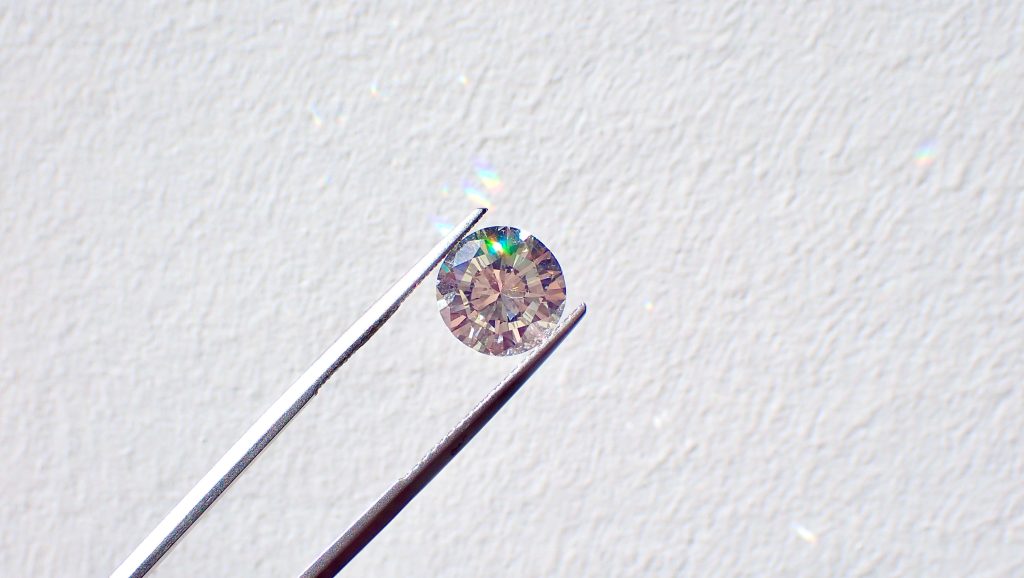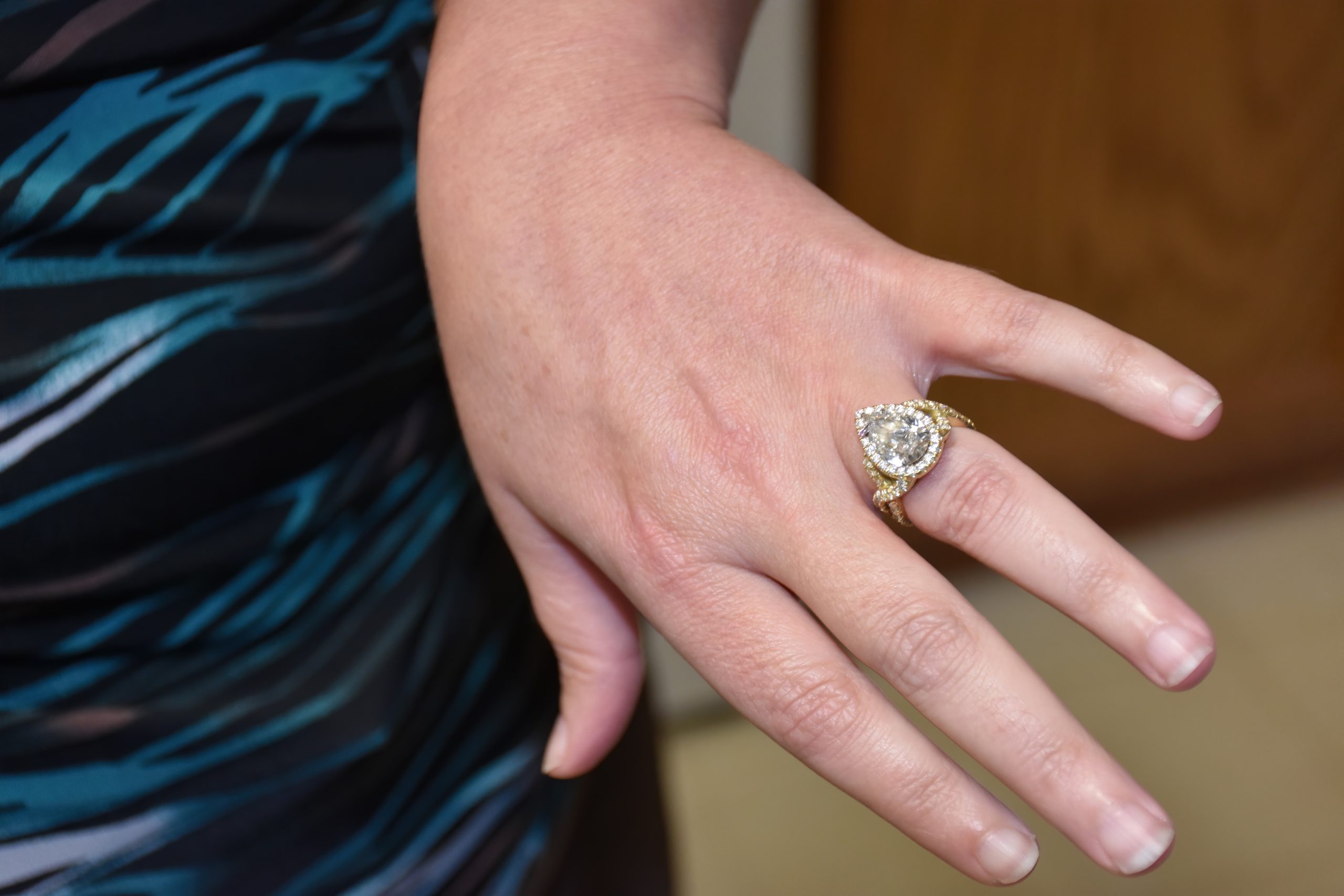There are several ways to determine the quality of a diamond tester is one of the easiest. Using a magnifying glass, a loose diamond is dropped into a glass of water. A real stone will sink to the bottom of the glass, while a fake stone will float. The density of the diamond will determine whether or not it is real. A loupe is a magnifying device that enables people to see any visible imperfections on a diamond. A loupe is available at a jewelry store, online, or even at craft stores. A genuine diamond will usually have small internal flaws that are easily visible when viewed through a magnifying glass. If you spot any, you can be sure that the stone is a real one. A fake diamond will have a perfect mirror reflection.
Hold a magnifying glass up to your diamond and examine it through it to see whether it is genuine. Keep an eye out for flaws in the stone. If you can’t find any, the diamond is almost certainly phony. Inclusions are flaws found in the majority of genuine diamonds. There are flawless diamonds available, but they are either lab-created or extremely expensive. Diamonds are valuable, rare, and costly. For most people, purchasing one is a significant investment. You certainly don’t want to make a mistake with this investment.
As a result, you should know how to detect if a mounted diamond is real or not before choosing that particular stone for that special someone. Many jewels have a strong resemblance to diamonds. White sapphire, topaz, and white zircon are just a few examples.
There are various methods to find out whether a diamond is real or not.
With FogPlace the diamond in front of your mouth and, like a mirror, fog it up with your breath to see whether it’s real. If the stone remains fogged for more than a few seconds, it’s most likely a fake. Because condensation does not stick to the surface of a real diamond, it does not fog up easily.
How To Use Water To Determine Whether A Diamond Is Genuine?
This one is simple: Fill a glass with water (it doesn’t matter what kind of water you use). Place the diamond in the water glass. When an actual diamond is placed into water, it sinks due to its high density. It’s a fake if the diamond floats to the top or center of the glass. It’s just a matter of physics.
With a black light
Obviously, you’ll need a black light for this one. Turn off the lights and place the diamond in front of the black light once you have it. Under a black light, most diamonds will show blue fluorescence; as a result, you’ll see a mild to intense blue color, indicating that the diamond is genuine. If you don’t detect the blue color and instead see a slightly green, yellow, or grey fluorescence, the gem is most likely not a genuine diamond. But keep in mind that this isn’t a foolproof test, and not all real diamonds will fluoresce blue.
With a loupe
Jewelers use a loupe, which is a small magnification instrument, to see small features up close. The only difference between a loupe and a magnifying glass is that a loupe lacks an attached handle and has a slightly conical lens frame. When evaluating diamonds for clarity and class, most jewelers use loupes.
Scratching Is A Good Way To Test
This test is based on the fact that diamonds are one of the world’s toughest materials, allowing them to be cut through glass. This is the scratch test, and it should show whether or not your glass is genuine. All you’ll need is a glass plate and your diamond.
Place the glass on a platform and use your diamond to scrape its surface. There’s a strong probability your diamond is genuine if you suffer a scratch. If you don’t, it’s a forgery. It should be noted, however, that this procedure may cause harm to the glass. It’s also not one of the most accurate ways to determine the quality of your stone because many different gems could produce similar findings.
The Dot Test is a method of determining whether or not
This approach is similar to the Transparency test, but it uses conventional white paper instead of transparent material. Place your sheet of paper on a level surface and make a little drawing on it with a pen. Then, with the flat side down, place your diamond on the dot. Through the diamond’s pointed end, look down onto the paper. If you can see a reflection of the circle within the stone, you know it’s a fake. If you can’t see the reflection in the stone, you’ve got a genuine diamond.
Diamond possesses exceptional refractive properties. Instead of a straight line, light bounces in multiple directions through it. As a result, you’ll never be able to read letters or see dots through a natural, actual window.
Invest in a diamond tester
Most gemologists have a thermal conductivity probe or meter in addition to a loupe. This tool is used to determine a gemstone’s thermal conductivity. Due to their heat conducting qualities, the diamond should distribute heat quickly once it is warm. Most synthetic moissanite stones conduct heat in a similar or the same manner as actual diamonds. As a result, with moissanite, this test is inconclusive.
There are many different types of real diamond testers on the market, so pick your favorite.
Do Diamonds Sparkle Rainbow?
Inside the stone, genuine diamonds do not glisten in rainbow colors. The inner of actual diamonds, on the other hand, gleams in white and grey tones. The diamond’s play on light is brilliant. The cut of a diamond is one component that impacts its brilliance. When light from real diamonds is reflected off other surfaces, it produces a rainbow of hues. In other words, when direct light strikes the diamond, it emits colors. The term “fire” refers to a diamond’s flare of hues.
Most jewelry aficionados, of course, are drawn to vivid multicolor sparks. Many of them are more concerned with the appearance of the stone than with its value. This works nicely as long as they are aware that they are not in possession of a genuine diamond. Regrettably, some people are unaware that their diamond is fake.
With A Flashlight, How Can You Tell If A Diamond Is Real?
According to some sources, a flashlight may be used to tell the difference between a real diamond and a fake. Hold the flashlight vertically with the beam shooting up and place the stone upside down on the lens to see if it’s a true diamond. Examine how the flashlight’s light travels through and out of the stone. Do you perceive merely white light or a rainbow of colors on the stone’s surface where the flashlight beam exits? Because diamond has a high refractive index, white light entering the substance is divided into component colors before exiting. It’s advisable to utilize a comparison stone-like CZ or glass that you know is fake for this procedure. With a flashlight, you can identify if a diamond is real if it successfully separates light into spectrum colors, whereas the fake comparison stone does not.
Does It Make A Difference If My Diamond Isn’t Real?
A fake diamond has the disadvantage of not having the same durability as a genuine diamond. Other transparent stones will degrade, chip, and scratch as a result of this. This is only one of the many reasons why diamonds are so valuable. The word ‘diamond’ comes from the Latin word ‘Adamas,’ which means “invincible.”
They also don’t have the same appearance as a genuine diamond. They won’t have the same dazzling gleam, and they’ll appear drab or foggy.
Conclusion
Using a magnifying glass to examine a diamond can help you determine the quality of a stone. You can also use a newspaper to test a loose diamond. A real diamond will reflect light in a different way, which is the hallmark of a genuine diamond. For instance, if a stone does not reflect light from a newspaper, it is not a true ring.
The next step in determining the quality of a diamond is to observe its light reflection. When a diamond is a true diamond, it should reflect white light and not a rainbow. Moreover, a genuine diamond should reflect white light. Besides, a fake stone will not reflect any color. For this reason, it is important to keep an eye on the quality of a stone, especially if you are looking to buy a jewelry item.








